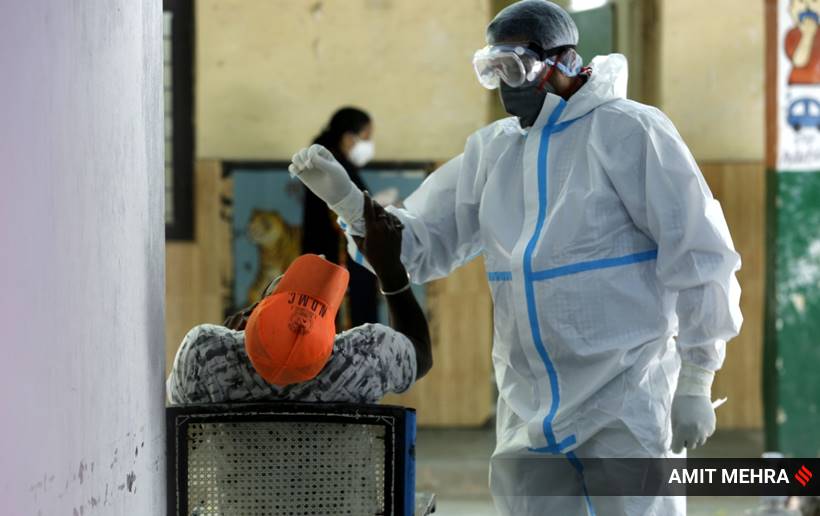 As cases continue to spike, the recovery rate in the city has fallen down from 82.3 per cent in the beginning of July to 70.19 per cent now. (Express)
As cases continue to spike, the recovery rate in the city has fallen down from 82.3 per cent in the beginning of July to 70.19 per cent now. (Express)
Twenty-six more residents in the UT tested positive for coronavirus on Sunday, taking the total tally of patients up to 717, with 217 active cases. As per the daily bulletins issued by the administration until Friday night, the disease has spread to at least 56 localities in Chandigarh until now.
The 26 new patients diagnosed on Sunday include eight members of a family at Dhanas, who were in contact with an already diagnosed family member. The number of cases at Dhanas has ratcheted up to 27 in this month while new cases continue to be diagnosed from the locality every day. Patients were also diagnosed from Daria, Sector 32, Sector 7, Sector 45, Mauli Jagran, Sector 48, Sector 46, Sector 30, Sector 39 and Sector 20 on Sunday.
Meanwhile, two patients from PGIMER and one from Dhanwantri Ayurveda College were discharged on Sunday.
COVID spreads to 56 localities in Chandigarh
As COVID-19 cases continue to spike in the city, patients have been diagnosed in a total of 56 localities, including 39 sectors, in Chandigarh until Monday night. Less than three weeks into the month of July, the disease has spread into at least 12 new localities. In June, it had spread to a total of 15 new localities in the city.
Though until the end of May, Bapu Dham Colony in Sector 26 was seen as the hotspot for most COVID-19 cases in the city, only five new patients have been diagnosed in the area from the beginning of July. More than 260 of the total 717 in the city are from the colony, though almost all these patients have now recovered, with one patient from the locality having passed away due to the disease. The second highest number of patients, i.e. 30, were diagnosed from the erstwhile hotspot of Sector 30. However, very few out of the total 30 patients from the locality are active cases while most have recovered.
With 32 patients, most of whom are still active and not yet recovered, the Manimajra area has now emerged as the locality with the most number of active COVID-19 cases in the city. Twenty-seven out of these 32 patients have been reported in July alone. After Manimajra, Dhanas and Sector 32 have emerged as the neighbourhoods with the most number of cases in Chandigarh. Dhanas now has 27 COVID-19 patients while Sector 32 has had a total of 23.
Furthermore, in the month of July, the disease has spread to eight sectors, including Sector 42, Sector 20, Sector 51, Sector 45, Sector 44, Sector 55 and Sector 63. One patients has also been diagnosed from Behlana village, a peripheral working class neighbourhood bordering Panchkula in Haryana while three have been diagnosed from Burail and one each from Raipur Khurd and Badheri villages.
Positivity rate increases, testing remains limited
Despite the disease spreading rapidly and indiscriminately across the city, affecting not only congested working class neighbourhoods but also spacious sectors housing the more affluent classes, testing rate and surveillance strategies have not evolved to address the spread of the disease.
Within three weeks into July, the positivity rate in the city increased from around 5.5 per cent to more than six per cent while testing has been limited to between 100 and 200 tests on an average day. An increasing positivity rate implies a shrinking testing rate, since it suggests that tests are being conducted within a narrow category of people and not indiscriminately across the city. “Testing rate and positivity rate are always inversely proportionate, so if your positivity rate goes up,
it means your testing rate is down,” explains a health economist based out of Kerala.
Furthermore, as cases continue to spike, the recovery rate in the city has fallen down from 82.3 per cent in the beginning of July to 70.19 per cent now. In July, the UT was touted by the administration as the region with the highest recovery rate amongst all states and UTs of India, which is no longer the case.